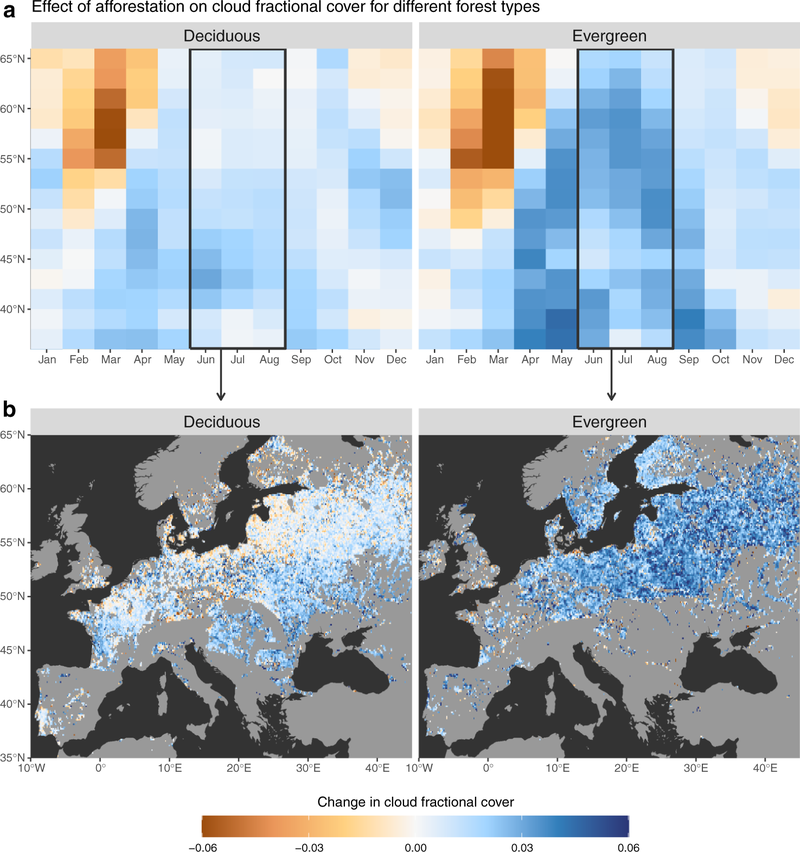July 28, 2021
Satellite observations reveal how forests increase cloud cover and cool climate
Forests not only benefit the climate by capturing carbon, they also increase low-level cloudiness, cooling the climate
Forests not only benefit the climate by capturing carbon, they also increase low-level cloudiness, which reflects more sunlight back into space and produces a climate cooling effect.
A first global-scale assessment using satellite observations has shown that for two-thirds of the world, establishing new areas of forest - afforestation - increases low-level cloud cover, with the cloud-generating effect strongest for evergreen needleleaf forests.
Forests are widely championed as the most realistic way to capture carbon and mitigate climate change, because trees absorb carbon dioxide from the atmosphere, converting it into biomass. But an area of uncertainty has been how forests affect climate in other ways, due to their localized impacts on the water cycle and surface energy balance.
"Earth Observations are increasingly showing that trees and forests are impacting climate by affecting biophysical surface properties,” says one of the co-authors of the study, Alessandro Cescatti.
This study examined the impact of transitions in vegetation cover into deciduous or evergreen forest, using the consistent, global-scale data records of cloud and land fractional cover produced by ESA’s Climate Change Initiative (CCI).
Cloud cover generally increased across the whole year over afforested areas in temperate, tropical and arid regions, sometimes by as much as 15%. But during boreal winter and spring across North America, Russia and Eastern Europe, when these regions have prolonged snow cover, the authors found a reduction in cloud cover over forests compared to open land. The boreal summer, on the other hand, has strong and consistent increases in cloud fraction by about 5%.
“Without global cloud and land cover type observations from satellites this study would not have been possible on global scale,” says Martin Stengel, who leads ESA CCI Cloud project and supported this study by providing CCI Cloud data specifically tailored for this kind of application. “The authors of this study appreciated the high spatial resolution of the CCI products.”
Cescatti says that the studies like this one, “based on robust satellite observations”, are fundamental to characterise the complexity of the climate system and provide benchmarks for climate model developments.
The team emphasises that land-based climate mitigation through afforestation, forest restoration or avoided deforestation should not be reasoned purely in terms of carbon capture. Instead, policies should include the wider climate benefits that forests offer, including increasing cloud cover for localised cooling, and generating rainfall, giving forests additional hydrological value.
Reference
Duveiller, G., et al. (2021) Revealing the widespread potential of forests to increase low level cloud cover. Nat Commun 12, 4337. https://doi.org/10.1038/s41467-021-24551-5


